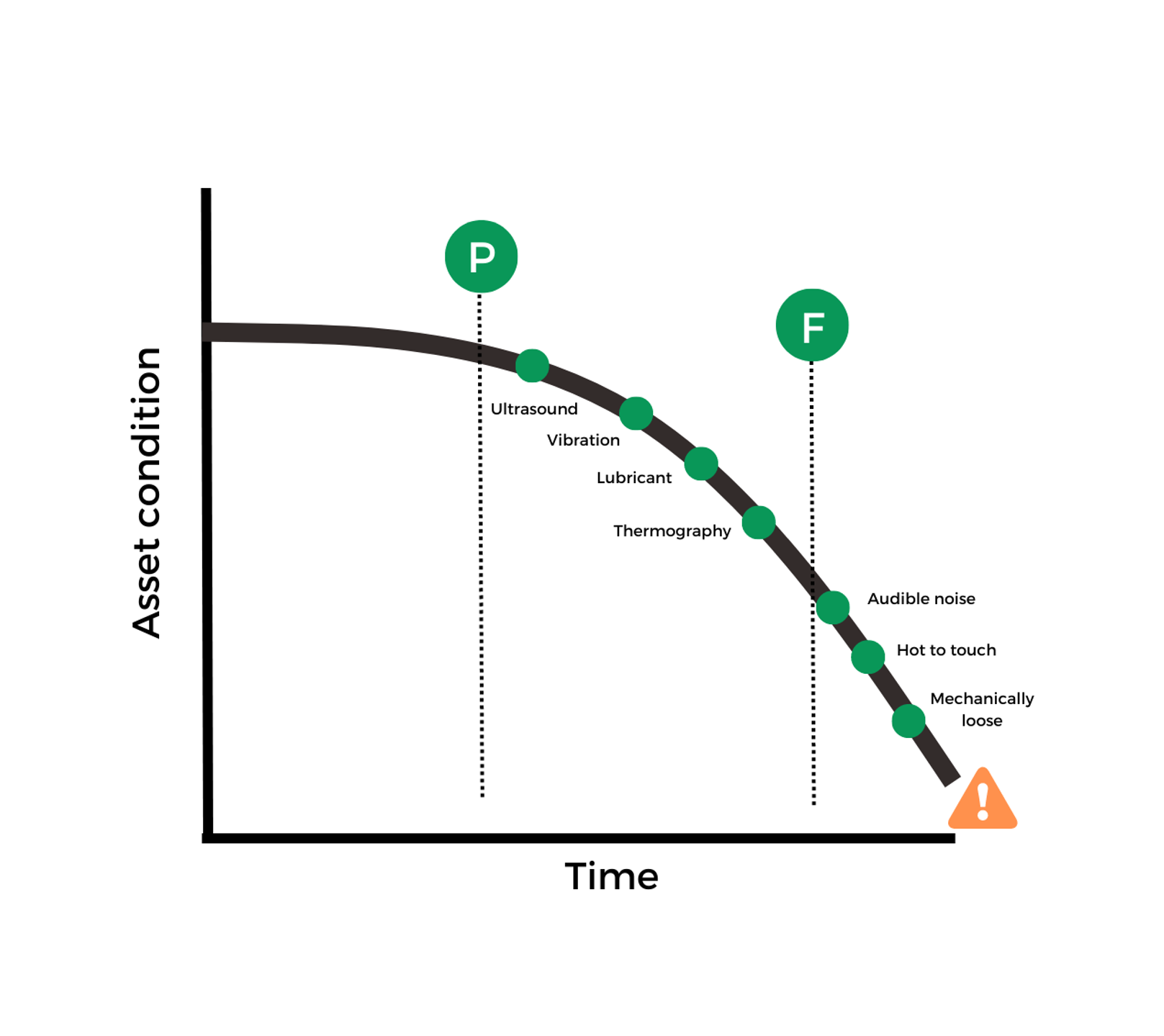
The detection and prevention of potential failures as early as possible is one of the key tasks in condition monitoring. This is also the case for Max, our head of inspection and maintenance at a plant.
.jpg?width=450&height=328&name=Max-10a-final%20(1).jpg)
In order to do that, his engineers need a deep understanding of the deteriorating mechanisms of the asset. An asset’s degradation and failure rates do not remain constant throughout its lifecycle.
The P-F curve is a way to map the equipment degradation over time and shows which tools can help inspection and maintenance teams to monitor equipment along the way. "P" indicates the point when failure symptoms have started to appear. If the condition persists, the failure is going to happen later in time. Point "F" represents the point in time when the asset reaches functional failure. Along the way, different condition monitoring methods can help maintenance staff to track the changing patterns in condition parameters and alert them about an underlying deterioration to take adequate actions in time.
Moving along the time axis means, that different indicators/symptoms can emerge which can be detected by using different condition monitoring methods. See the illustration below.
The Figure is illustrative only, most assets operate for a lengthy period of time and the steepness of the failure portion varies from asset to asset.
.png?width=747&height=747&name=small%20changes%2c%20big%20diff.%20post%20(4).png)
First, the level of degradation is minor and normally does not require a lot of action. The P-F curve illustrates again the advantage of ultrasound methods to detect discontinuities at a very early stage, allowing maintenance teams to identify potentially vulnerable components long before operational failure occurs and to plan actions accordingly. We have also shown that in our latest blog articles where we compared different inspection methods. See here:
https://blog.senseven.ai/understanding-active-ultrasound-vs.-acoustic-emission-exploring-nondestructive-testing-methods
https://blog.senseven.ai/vibration-analysis-and-acoustic-emission-testing-benefits-and-limitations-for-predictive-maintenance
https://blog.senseven.ai/structure-borne-sound-vs.-air-borne-sound-whats-the-difference-and-why-does-it-matter
Over time, the potential failure indicators become stronger and stronger and are more easily detectable, resulting in asset failure if no action is undertaken.
Depending on the asset, additional indicators to the once shown in the graph may arise. By analyzing these different indicators with the given tools, maintenance teams can determine which indicators they prioritize for their maintenance activities to avoid costly downtime and unplanned standstills. But no single technology solves everything. Each method mentioned above has its strengths and limitations and inspection/maintenance teams therefore use different methodologies to sure a healthy state of their assets.
At Senseven, we can support you in the early detection of leaking valves based on acoustic emission (ultrasound). Get in touch if you would like to learn more: office@senseven.ai
Which tools are you relying on for your condition-based monitoring? Leave us a comment 👇
Leave Your Comment Here